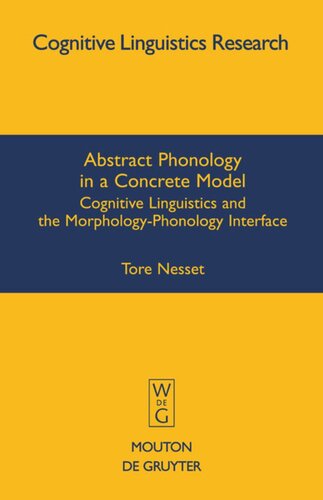

Most ebook files are in PDF format, so you can easily read them using various software such as Foxit Reader or directly on the Google Chrome browser.
Some ebook files are released by publishers in other formats such as .awz, .mobi, .epub, .fb2, etc. You may need to install specific software to read these formats on mobile/PC, such as Calibre.
Please read the tutorial at this link: https://ebookbell.com/faq
We offer FREE conversion to the popular formats you request; however, this may take some time. Therefore, right after payment, please email us, and we will try to provide the service as quickly as possible.
For some exceptional file formats or broken links (if any), please refrain from opening any disputes. Instead, email us first, and we will try to assist within a maximum of 6 hours.
EbookBell Team

4.4
52 reviewsThis book is relevant for phonologists, morphologists, Slavists and cognitive linguists, and addresses two questions: How can the morphology-phonology interface be accommodated in cognitive linguistics? Do morphophonological alternations have a meaning? These questions are explored via a comprehensive analysis of stem alternations in Russian verbs. The analysis is couched in R.W. Langacker's Cognitive Grammar framework, and the book offers comparisons to other varieties of cognitive linguistics, such as Construction Grammar and Conceptual Integration. The proposed analysis is furthermore compared to rule-based and constraint-based approaches to phonology in generative grammar.
Without resorting to underlying representations or procedural rules, the Cognitive Linguistics framework facilitates an insightful approach to abstract phonology, offering the important advantage of restrictiveness. Cognitive Grammar provides an analysis of an entire morphophonological system in terms of a parsimonious set of theoretical constructs that all have cognitive motivation. No ad hoc machinery is invoked, and the analysis yields strong empirical predictions. Another advantage is that Cognitive Grammar can identify the meaning of morphophonological alternations. For example, it is argued that stem alternations in Russian verbs conspire to signal non-past meaning.
This book is accessible to a broad readership and offers a welcome contribution to phonology and morphology, which have been understudied in cognitive linguistics.